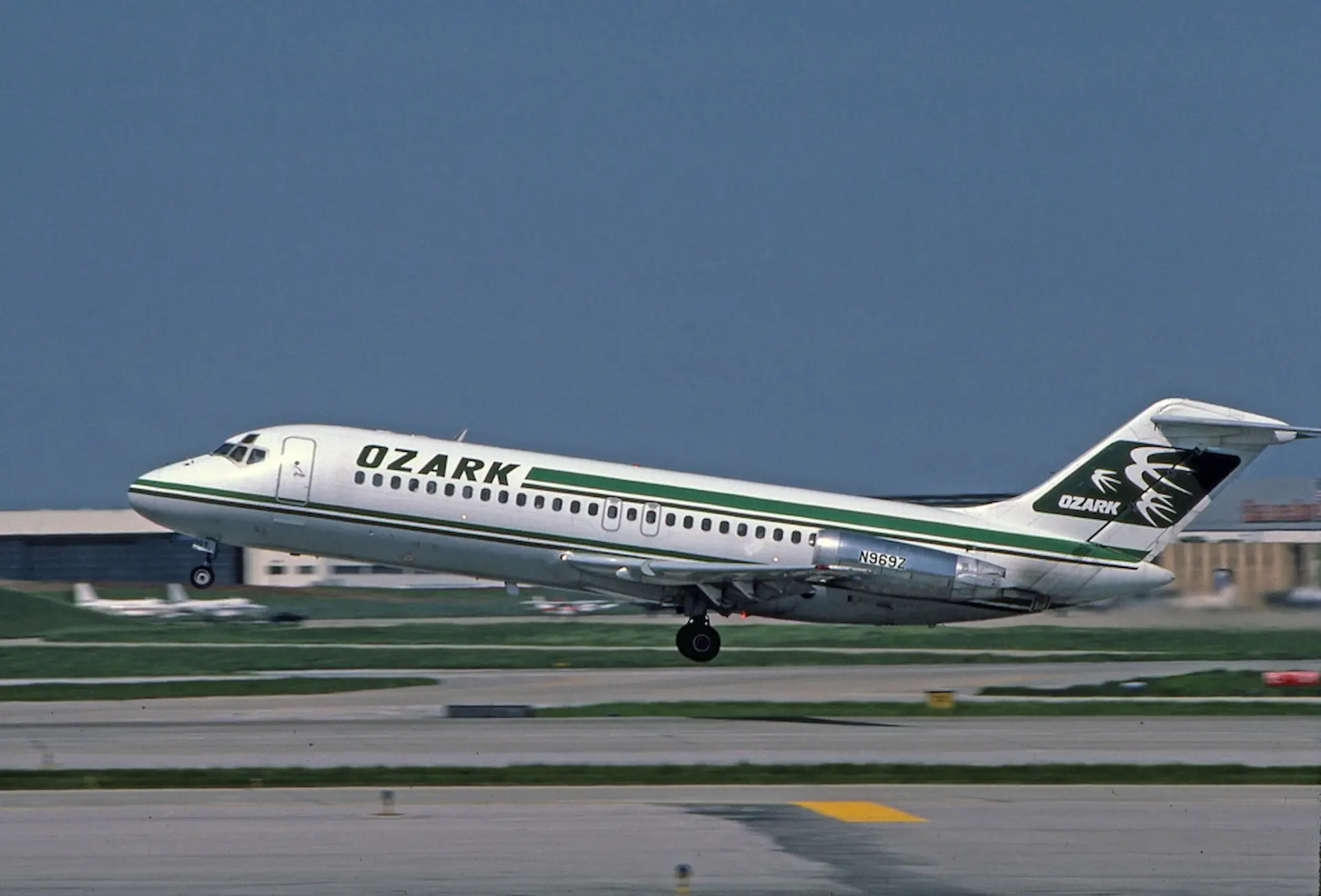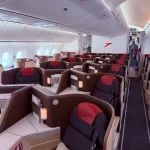If you’ve ever browsed vintage airline timetables or old boarding passes, you might have come across the name Ozark Airlines. For younger travelers, the name might sound unfamiliar. But for those of us who study the roots of regional aviation in the U.S., or who flew through smaller Midwestern airports in the 1960s to 1980s, Ozark Airlines represents an important chapter in domestic air travel history.
In this article, I’ll walk you through the story of Ozark Airlines: who they were, where they flew, and why they mattered. I’ll also break down what happened after the brand disappeared from the skies and how its legacy still impacts the U.S. regional air travel network today.
What Was Ozark Airlines
Ozark Airlines was a regional U.S. airline that operated from 1950 to 1986. Headquartered in St. Louis, Missouri, the airline served as a vital connector for smaller cities throughout the Midwest and South, offering scheduled passenger flights to airports that larger carriers didn’t reach directly.
The original Ozark Air Lines was certified in 1950 but began scheduled operations in 1955, quickly becoming a lifeline for cities like Springfield, Champaign, Peoria, and Carbondale. They positioned themselves as a dependable regional airline long before the term “regional carrier” was widely used in commercial aviation.
What Kind of Aircraft Did Ozark Operate
Over its history, Ozark Airlines maintained a modest but diverse fleet. It adapted its aircraft to match regional route demands and runway limitations.
Fleet Overview
- Douglas DC-3: The initial workhorse of the airline
- Fairchild Hiller FH-227: A reliable turboprop used throughout the 1960s
- Douglas DC-9-10 and DC-9-30: Jet service began in the late 1960s
- McDonnell Douglas MD-80: Introduced in the 1980s for longer-haul routes
By the early 1980s, Ozark had transitioned to an all-jet fleet, primarily operating DC-9 variants. This allowed the airline to streamline maintenance, increase speed, and compete more directly with major carriers on select routes.
Where Did Ozark Airlines Fly
Ozark Airlines specialized in point-to-point regional service, primarily across the Midwest and parts of the South and Great Plains. At its peak, it served more than 50 cities.
Major destinations included:
- St. Louis (STL) – the airline’s main hub
- Chicago O’Hare (ORD)
- Minneapolis–St. Paul (MSP)
- Kansas City (MCI)
- Indianapolis (IND)
- Des Moines (DSM)
- Nashville (BNA)
- Little Rock (LIT)
- Omaha (OMA)
- Tulsa (TUL)
Their service focused on connecting underserved cities to larger hubs, which allowed business travelers and small communities access to the national network.
What Made Ozark Airlines Unique
Several things stood out about Ozark’s approach to regional air service:
- Midwestern Identity: Ozark leaned heavily into its roots, branding itself as a dependable and no-frills carrier for Midwestern communities.
- St. Louis Focus: The airline turned St. Louis Lambert Field into a major connecting point, long before American Airlines took over the hub.
- Punctuality and Service: Known for its strong operational reliability, Ozark often ranked high in on-time performance for its size.
Ozark was also notable for keeping its ticket prices competitive while offering full-service features during an era of deregulation.
What Happened to Ozark Airlines
In 1986, Ozark Airlines was acquired by Trans World Airlines (TWA) for approximately $242 million. The acquisition was driven by overlapping routes, particularly at the St. Louis hub, where both carriers had strong presences.
Once the merger was complete, the Ozark brand disappeared, and its fleet was absorbed into TWA’s operations. This marked the end of one of the most respected regional airlines of its time.
Eventually, TWA itself was acquired by American Airlines in 2001. Today, many of the former Ozark routes continue under the American Airlines banner, especially through its regional affiliates.
What Is the Legacy of Ozark Airlines Today
Although the airline hasn’t flown in nearly four decades, its influence still lingers in several ways:
- Regional Network Model: Ozark helped define what a successful point-to-point regional model could look like.
- STL as a Hub: Much of St. Louis Lambert’s former hub structure traces back to Ozark’s initial investments.
- Alumni Legacy: Many former Ozark employees went on to senior positions in other major airlines.
In 1993, a new Ozark Air Lines was launched by former employees and aviation investors. However, this iteration was short-lived, ceasing operations in 1995. It had no direct legal connection to the original carrier, but the brand name still carried nostalgia.
Are There Any Remnants of Ozark Airlines Today
Yes, though they are few and mostly symbolic. If you visit aviation museums across the Midwest, particularly near St. Louis or Springfield, Illinois, you’ll find:
- Vintage Ozark timetables
- Restored DC-3s and DC-9s
- Ozark-branded uniforms, pins, and models
The Missouri History Museum and Greater St. Louis Air & Space Museum have exhibited Ozark artifacts. Aviation collectors frequently trade Ozark memorabilia, and the airline is still a favorite topic among airline historians and aviation forums.
What Can Modern Airlines Learn from Ozark Airlines
As someone who studies airline operations closely, I believe Ozark offered lessons that are still relevant in today’s fragmented regional aviation landscape:
- Simplicity in Fleet Management: By standardizing jets in the 1980s, Ozark reduced costs and improved reliability.
- Community-Centric Strategy: Ozark didn’t try to be everything for everyone. It focused on smaller cities and built trust.
- Efficient Hub Usage: They maximized their St. Louis hub without the need for massive infrastructure.
For current carriers like Envoy Air, SkyWest, and even Breeze Airways, Ozark’s model is a reminder that regional doesn’t mean second-tier, it means responsive, efficient, and essential.
Frequently Asked Questions About Ozark Airlines
Was Ozark Airlines part of a major airline group
No. Ozark was independent until it merged with TWA in 1986.
What happened to Ozark’s aircraft
Most were absorbed into TWA’s fleet. Some were sold off, scrapped, or repurposed by other carriers.
Can I still see Ozark airplanes
Yes. Some preserved aircraft are on display at air museums across the Midwest.
Did Ozark have international flights
No. Ozark focused entirely on domestic U.S. operations.
Did they offer loyalty programs
Yes. Ozark had a frequent flyer program, though it wasn’t as elaborate as today’s schemes.





